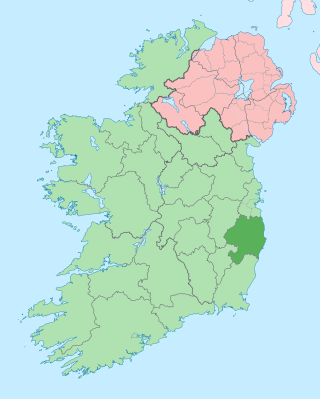
County Wicklow is a county in Ireland. The last of the traditional 32 counties, having been formed as late as 1606, it is part of the Eastern and Midland Region and the province of Leinster. It is bordered by the Irish Sea to the east and the counties of Wexford to the south, Carlow to the southwest, Kildare to the west, and South Dublin and Dún Laoghaire–Rathdown to the north.

Glendalough is a glacial valley in County Wicklow, Ireland, renowned for an Early Medieval monastic settlement founded in the 6th century by St Kevin. From 1825 to 1957, the head of the Glendalough Valley was the site of a galena lead mine. Glendalough is also a recreational area for picnics, for walking along networks of maintained trails of varying difficulty, and also for rock climbing.

The River Liffey is a river in eastern Ireland that ultimately flows through the centre of Dublin to its mouth within Dublin Bay. Its major tributaries include the River Dodder, the River Poddle and the River Camac. The river supplies much of Dublin's water and supports a range of recreational activities.

The Wicklow Mountains form the largest continuous upland area in Ireland. They occupy the whole centre of County Wicklow and stretch outside its borders into the counties of Dublin, Wexford and Carlow. Where the mountains extend into County Dublin, they are known locally as the Dublin Mountains. The highest peak is Lugnaquilla at 925 metres.

Russborough House is a stately house near the Blessington Lakes in County Wicklow, Ireland. Located between the towns of Blessington and Ballymore Eustace, it is an outstanding example of Palladian architecture, designed by Richard Cassels for Joseph Leeson, 1st Earl of Milltown and built between 1741 and 1755. With a frontage measuring 210 m (690 ft), it may be the longest house in Ireland. The interior contains fine ornate plasterwork on the ceilings by the Lafranchini brothers, who also collaborated with Castle on Carton House. Russborough contains an important private collection of European fine and decorative arts, including furniture, silver, porcelain and paintings.

Blessington, historically known as Ballycomeen, is a town on the River Liffey in County Wicklow, Ireland, near the border with County Kildare. It is around 25 km south-west of Dublin, and is situated on the N81 road, which connects Dublin to Tullow. The town is in a townland and civil parish of the same name.

Ballymore Eustace is a small town situated in County Kildare in Ireland, although until 1836 it lay within an exclave of County Dublin. It lies close to the border with County Wicklow. The town is in a civil parish of the same name.
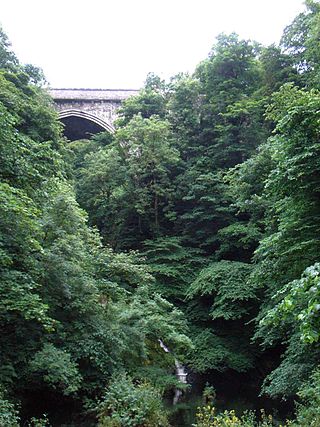
Poulaphouca, officially Pollaphuca, is the name of a waterfall and bridge on the River Liffey between County Wicklow and County Kildare. It is primarily known for its hydroelectric generating station and the associated artificial lake, known as Poulaphouca Reservoir, Poulaphouca Lake, or Blessington Lakes. The once-famous Poulaphouca Waterfall has little water running over it any longer because of the hydroelectric project.
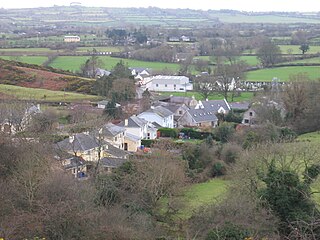
Hollywood is a village in west County Wicklow, Ireland. It is 15 km (9 mi) south of Naas on the Wicklow Gap road near its junction with the N81 road. It is known for its pre-1950s themed fair which takes place in August of every year. A population of less than 100 people registered in the 2002 Census, though the community draws from a larger area which consists of about 500 people. The village is in a civil parish of the same name.
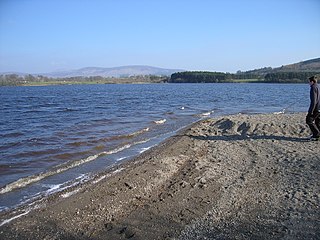
Poulaphouca Reservoir, officially Pollaphuca, is an active reservoir and area of wild bird conservation in west County Wicklow, Ireland named after the Poulaphouca waterfall on its south-western end where the water exits the lake. The lake is also commonly known as the Blessington Lakes, even though there is just one.
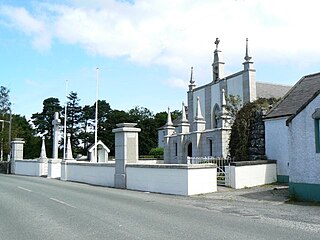
Valleymount is a small village in western County Wicklow, Ireland. The name 'Valleymount' does not appear before 1839. Previously, the village was known as 'the Cross of Ballymore' or simply 'the Cross', with 'cross' referring to land belonging to the church.
Butterhill is a townland in County Wicklow, Ireland. It is located near the town of Blessington.
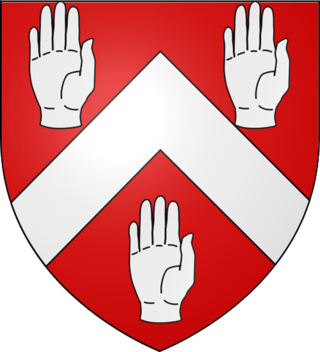
The O'Byrne family is an Irish clann that descend from Bran mac Máelmórda, King of Leinster, of the Uí Faelain of the Uí Dúnlainge. Before the Norman invasion of Ireland they began to colonise south Wicklow. There are many famous people with this Irish last name. This includes Anna O’Byrne, an Australian singer and actress, and Anna Marie O’Byrne, an American model.

Kilbride, or Manor Kilbride, is a village, civil parish and electoral division in County Wicklow, Ireland, located at the western edge of the Wicklow Mountains in the barony of Talbotstown Lower.

Rathmore, a village, civil parish and District electoral division in County Kildare, Ireland, is located at the western edge of the Wicklow Mountains in the barony of Naas North. The original settlement was at the southwest corner of the English Pale, serving an important function as a border fortress during the medieval period.
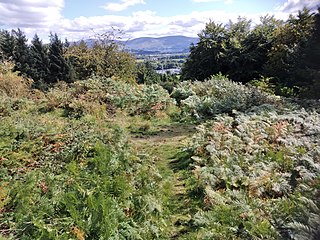
Rath Turtle Moat is a ringwork and National Monument located in County Wicklow, Ireland.
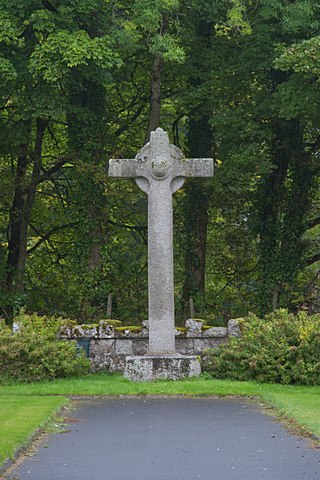
St. Mark's Cross is a high cross and National Monument located in Blessington, County Wicklow, Ireland.
Baltyboys House, also known as Boystown House, is an 18th-century Georgian country house close to Blessington, County Wicklow, Ireland.

Blessington House, Blessington Manor, the Manor House of Blessington, or Downshire House (post-1789) was a large estate house in Blessington, County Wicklow, Ireland built in 1673, and destroyed during the 1798 Rebellion. It was never rebuilt.

























